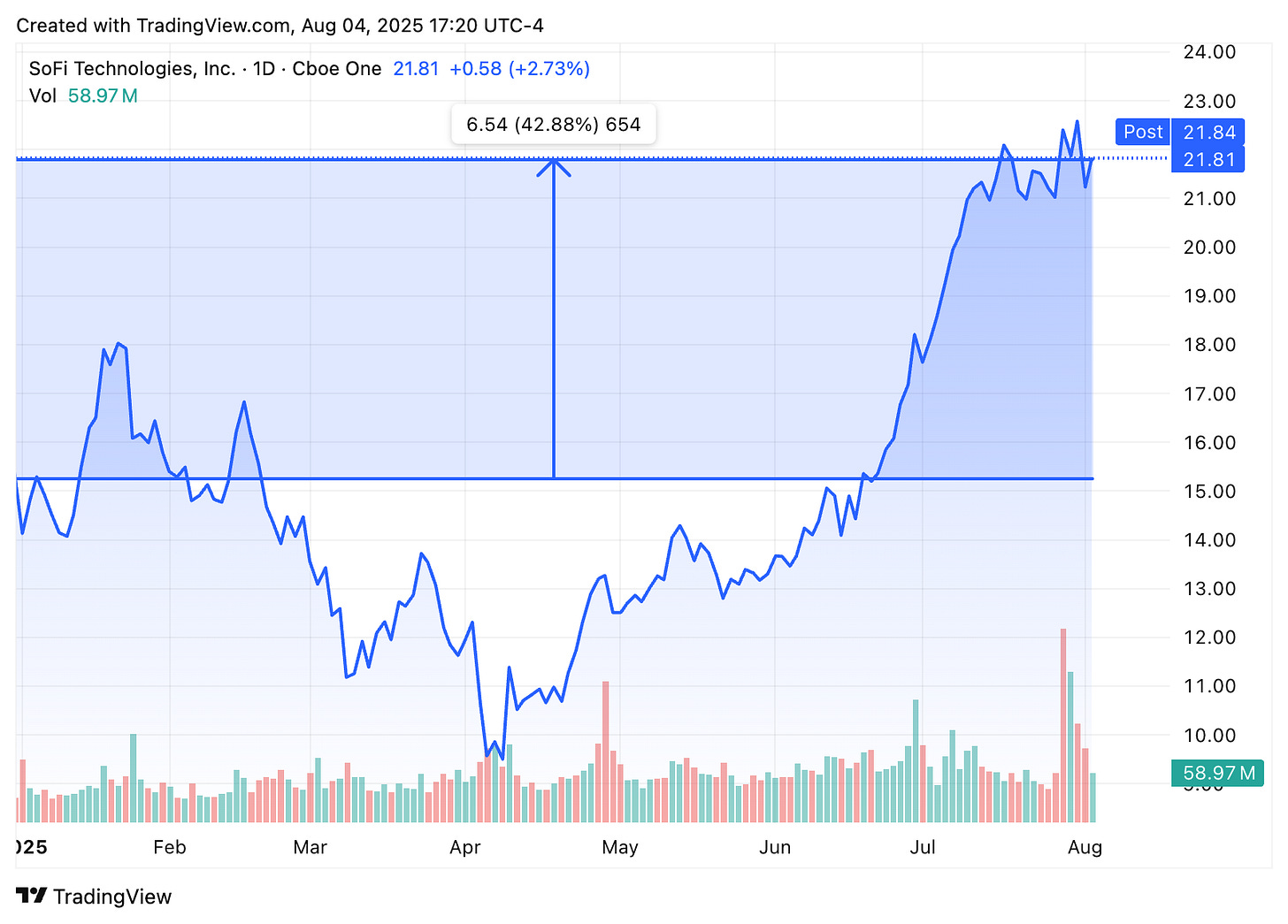The Fair-Value Flywheel: SoFi’s Greatest Strength and Its Darkest Shadow
How SoFi turns model-based loan marks into growth fuel, how it parallels MSTR and their crypto accounting, and how the same playbook could reverse fast.
There’s an odd type of investor & human in this life. The one that associates so deeply, so strongly with their positions that any comment made, feedback given, any dissent implied, any “I don’t take every word you say as gospel” triggers them into acting like a cornered animal. We all know the type, no matter what is said everything is an attack. It’s almost as if they have the ability to turn themselves into a victim suffering unjustly, just because something was said that may have disagreed with them.
Lesson number one for today friends is, don’t be that person. Turning yourself into a victim is not the solution to life’s problems, in fact it sows the seeds for future failures. But lesson number two is that as an investor your job is to seek and embrace all feedback. Your job is to take in as much as possible with a completely open mind. Your job is to try to poke holes in even your most devout beliefs, because that’s how you learn and that’s how you improve. And learning and improving are the keys to growing friends, both as an investor and as a human walking the Earth.
So, today’s is not about hate or dissent, it’s about caution. It’s about knowing what you really own. And it’s about how SoFi and FMV accounting creates a reflexive loop in the same way MicroStrategy (MSTR) creates one with it’s “crypto treasury” strategy, even if MSTR’s is ironically more transparent. These reflexive loops are absolute unadulterated bliss on the way up, but can become pure terror and disaster on the way down.
The CFA’s in the room will call this “convexity”. Convexity in finance terms is the move from linear to non-linear path, where increases in certain variables create increasing returns or moves. Convexity in layman’s terms is when things go from moving one for one, to moving parabolic or “to the moon” as the crypto folks say. But if you take one big lesson away from this write up today, it would be that convexity cuts both ways, both on the way up … and on the way down. If you’re an investor in MSTR or SOFI (or NEWT in the bank space) and you want to understand how the machine really works, beyond the “line go up”, this is for you. This is for the people that seek a deeper understanding and try to remove blindspots from their thinking.
Back in January, I wrote “What’s SoFi Worth?”, a back-of-the-napkin “I see what you’re doing letter” to the company’s Amazon Prime for money ambitions. I was right on fundamentals and a little light on price, which I’d call a win. At the time, they were running near $2.1 billion in trailing revenue, and Wall Street figured they’d wrap 2024 around $2.5 billion. As a boring old “bank investor” I got several, “are you serious” type notes from the community, but if you bought in based on that write-up, you’ve been on a ride that ended with gains relative to KRE’s flat returns. All told about a 40% to 50% gain, and you can read about it here. (SoFI January Write Up).
Funnily enough, when I did my work, I wanted to hate on SoFi, but they were a good way within financials to own growth. And growth has worked.
“I started researching SoFi and wanted to hate it. But I don’t. As an investor, you need to keep an open mind. If Trump in the White House means lower regulations, higher growth, a better economy, and good times rolling, then you want to own growth. It doesn’t have to be your whole portfolio, but you should own growth.”
Today, SoFi already posted $1.6 billion in adjusted net revenue in the first half of 2025 and management is now guiding to $3.4 billion for the full year. That’s a pace rising from the low 2s to north of $3 billion in just eighteen months. The stock chart looks like a roller coaster, the financials look like a launch ramp, and buried beneath both is a topic worth learning from: the rocket fuel behind the surge and the blowtorch that could reverse it. SoFi’s fair-value flywheel, and if you are a retail investor you should at least know that the accounting that builds the growth can unbuild it just as fast. And yes, with no shade, this is almost the exact same as what MSTR does.




